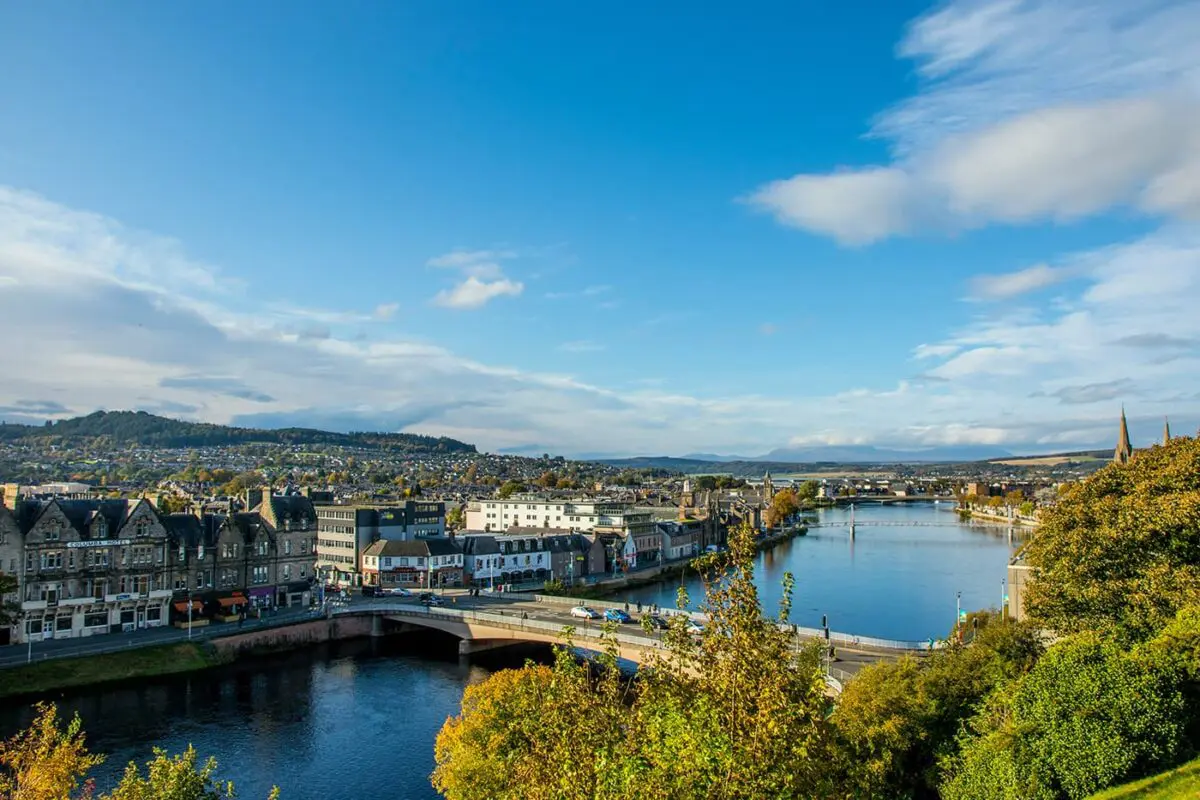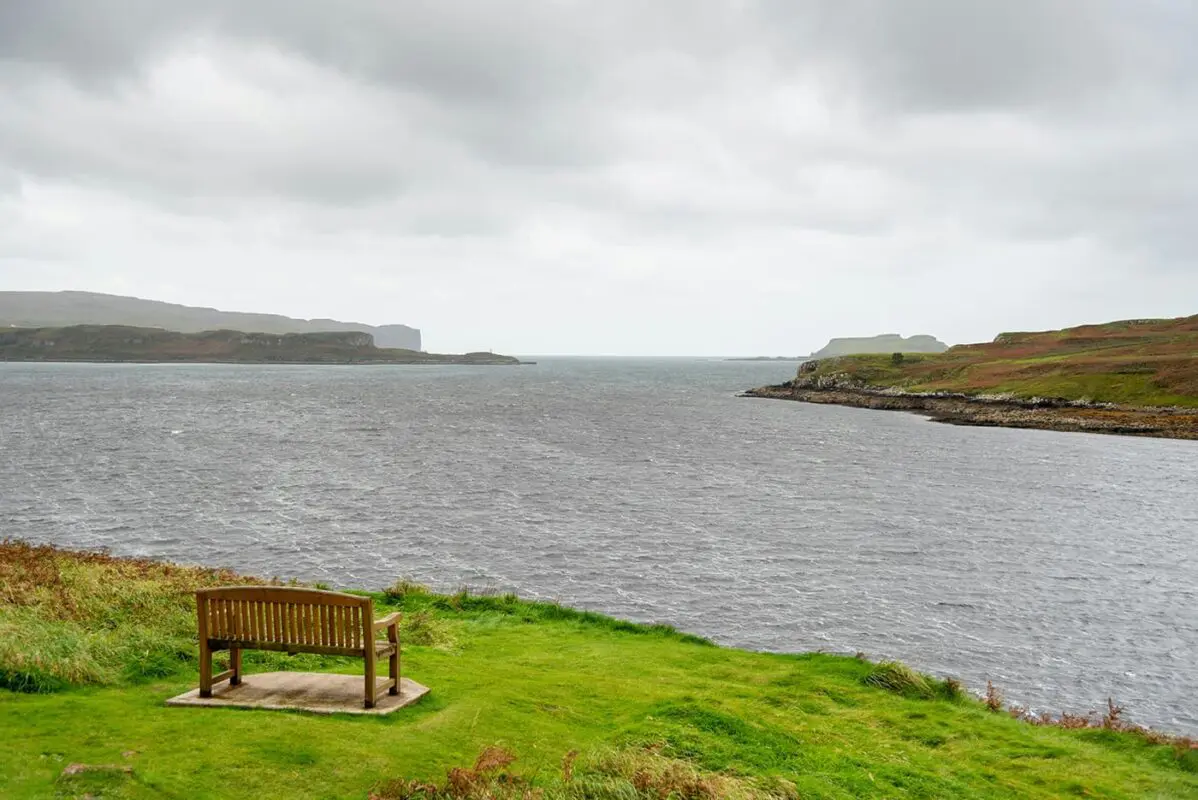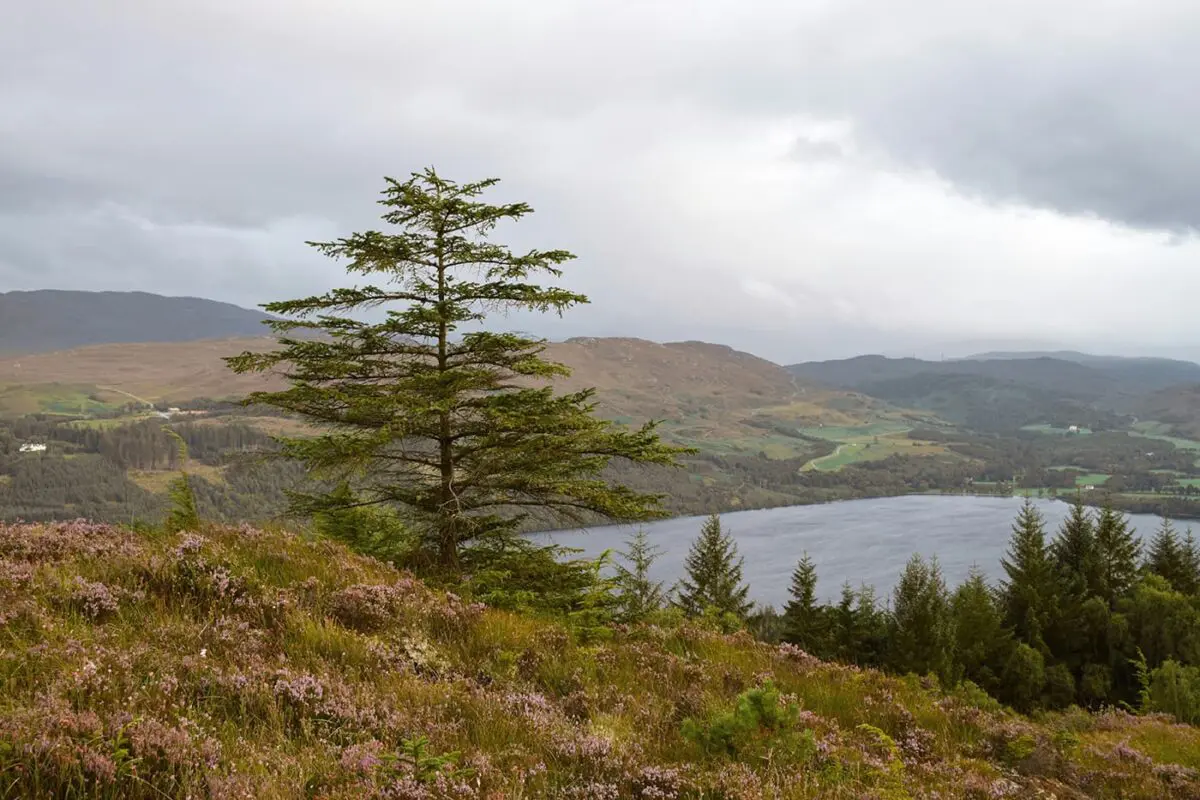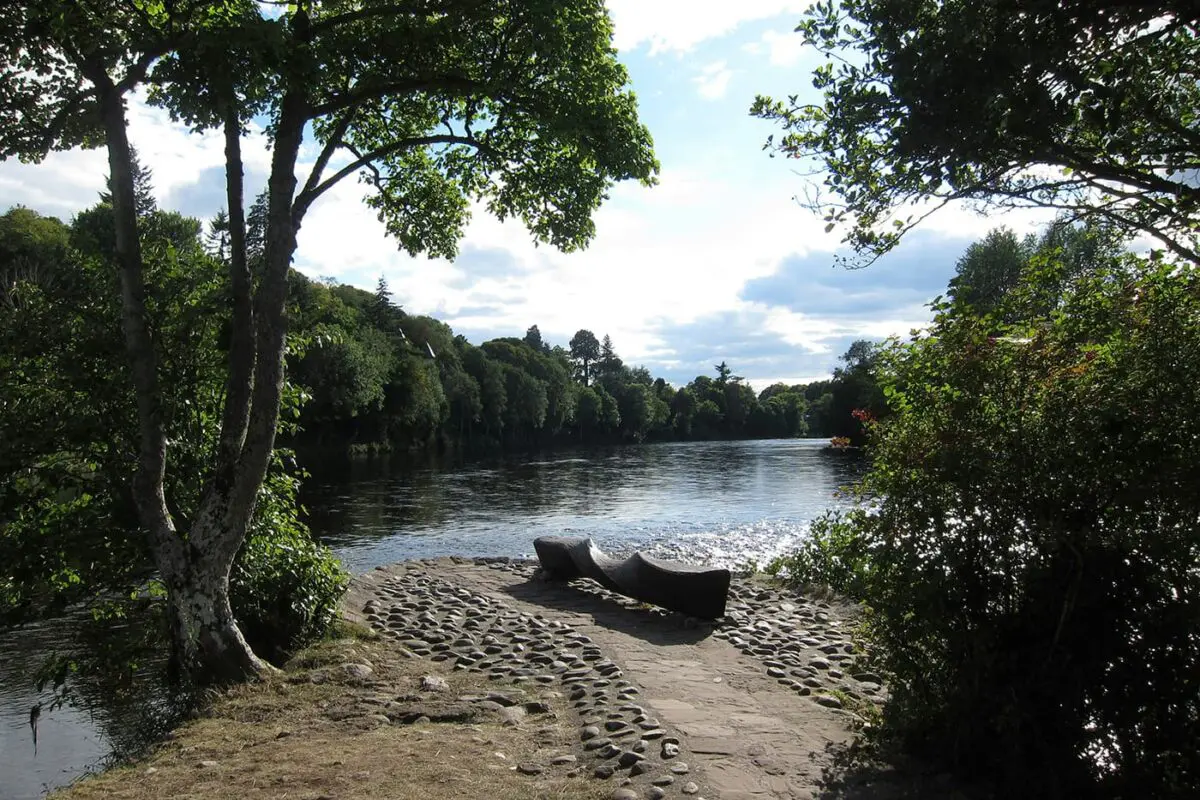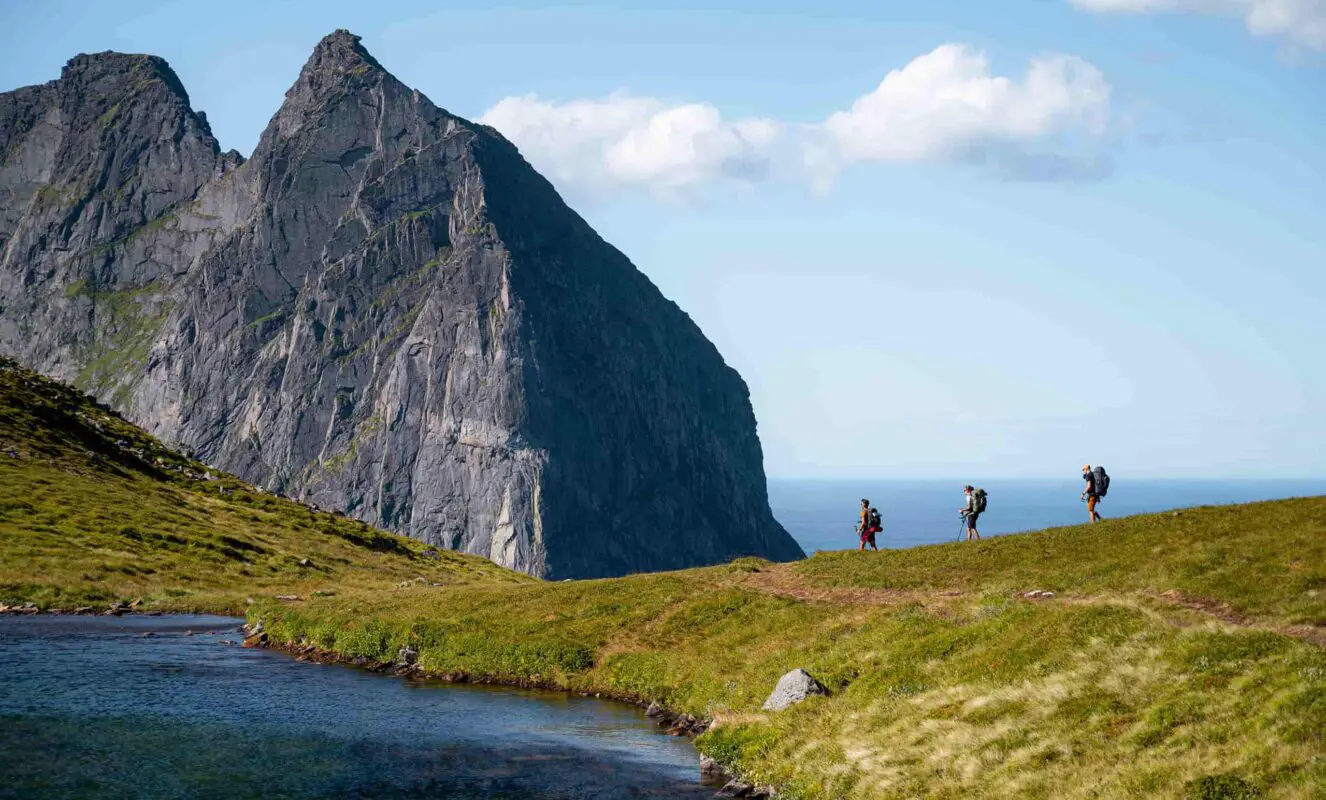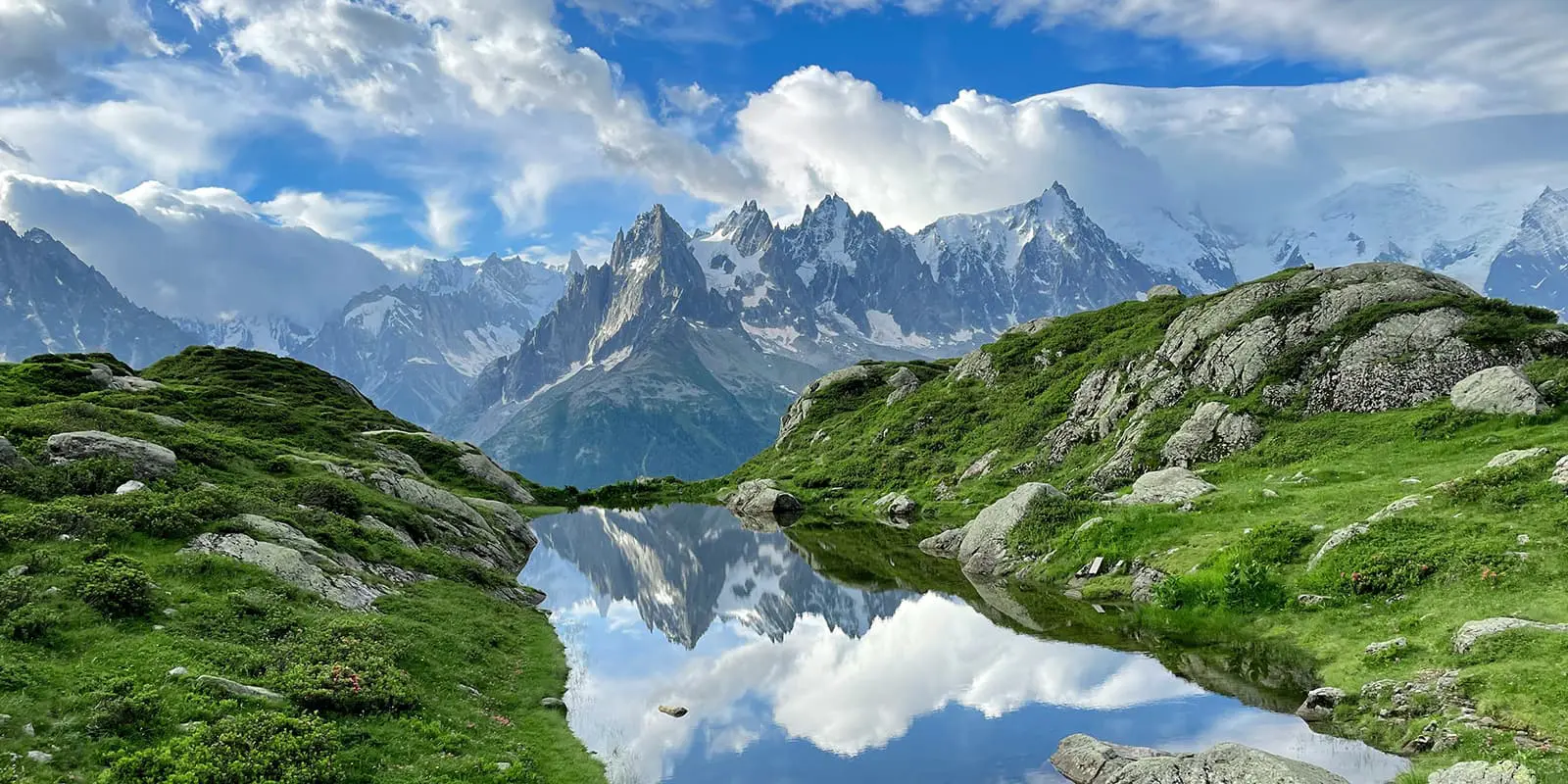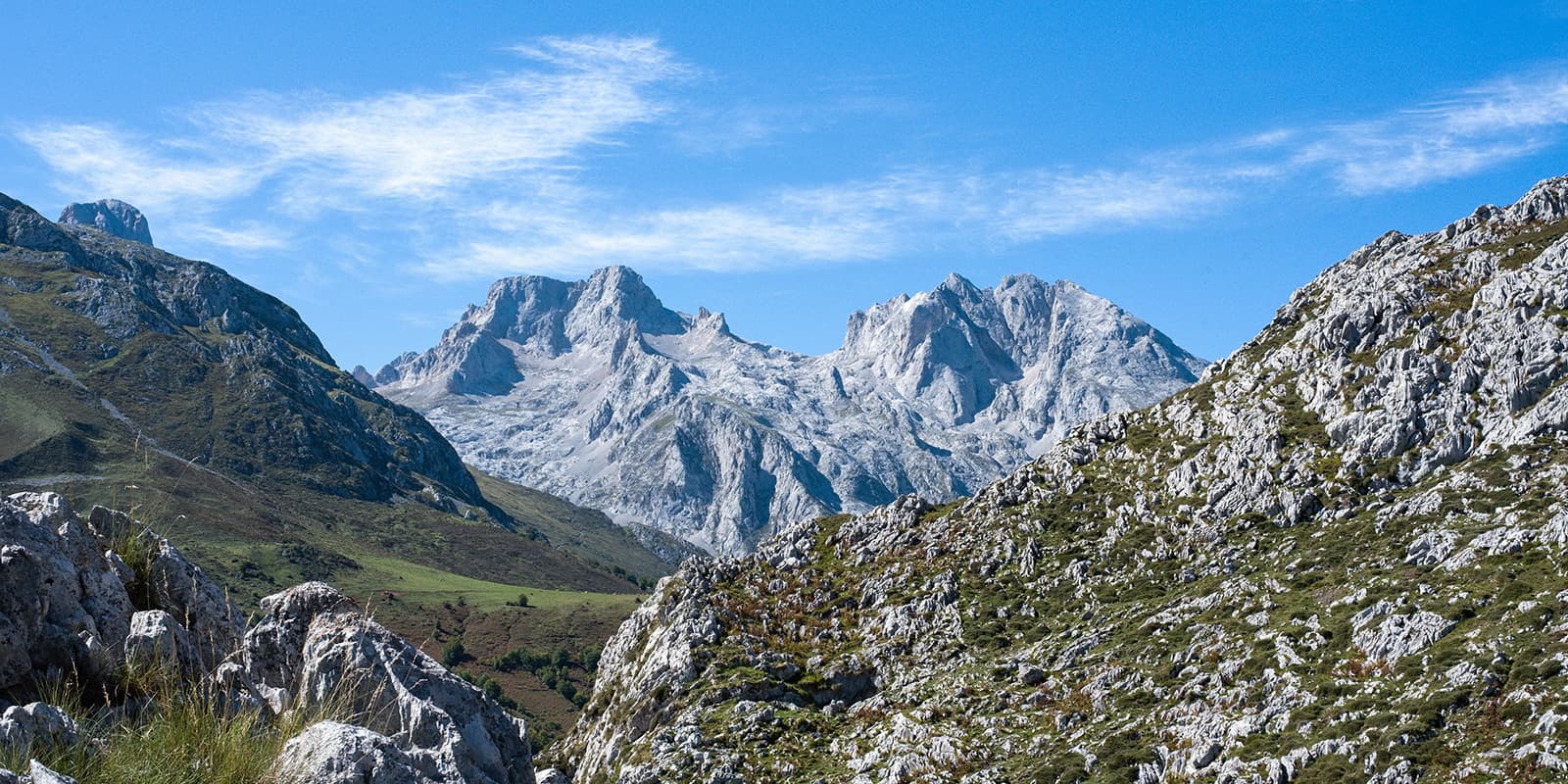Start or end the Great Glen Way in the famous outdoorsy city Fort William and run the entire length of Scotland’s longest glen. Stretching from coast to coast across the Highlands, it passes through some of the most stunning scenery, like Loch Lochy and Loch Oich, along the Caledonian Canal until you reach Inverness, the capital of the Highlands. And the very best? You also hike along the famous Loch Ness… maybe you will see Nessie?

Great Glen Way
The Trail
Mostly straightforward, you get a variety of walking terrains, following canal towpaths, forest tracks, old roads, and paths with excellent signposting along the whole way. The Great Glen Way is suitable for everyone. The only challenge will be through the forest above Loch Ness with some steep climbs.
Most of the classic route remains on lower levels, but since 2014 there is a higher level option between Fort Augustus and Drumnadrochit, which offers more dramatic views.
Due to the start or end in Fort William, there is a link to numerous other trails in Scotland, like the famous West Highland Way.
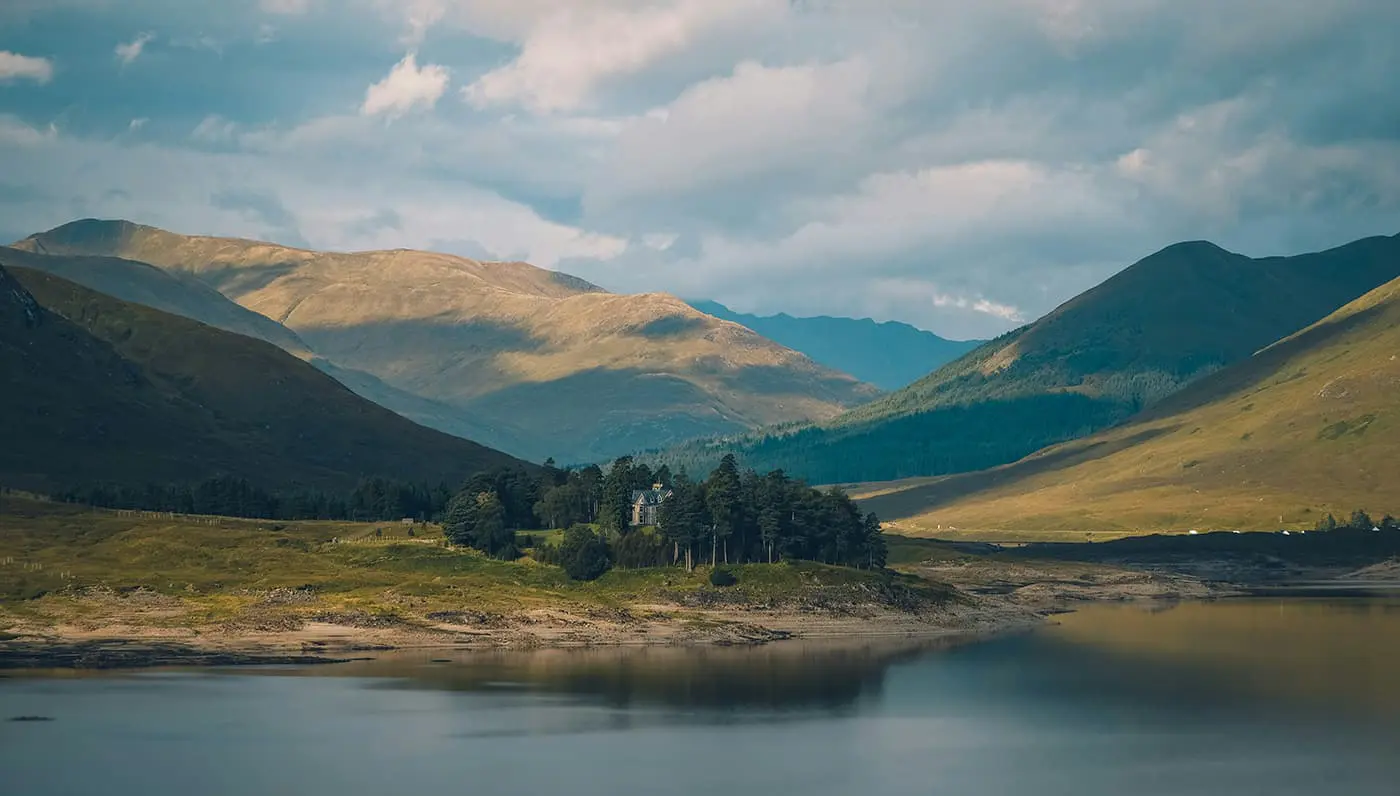
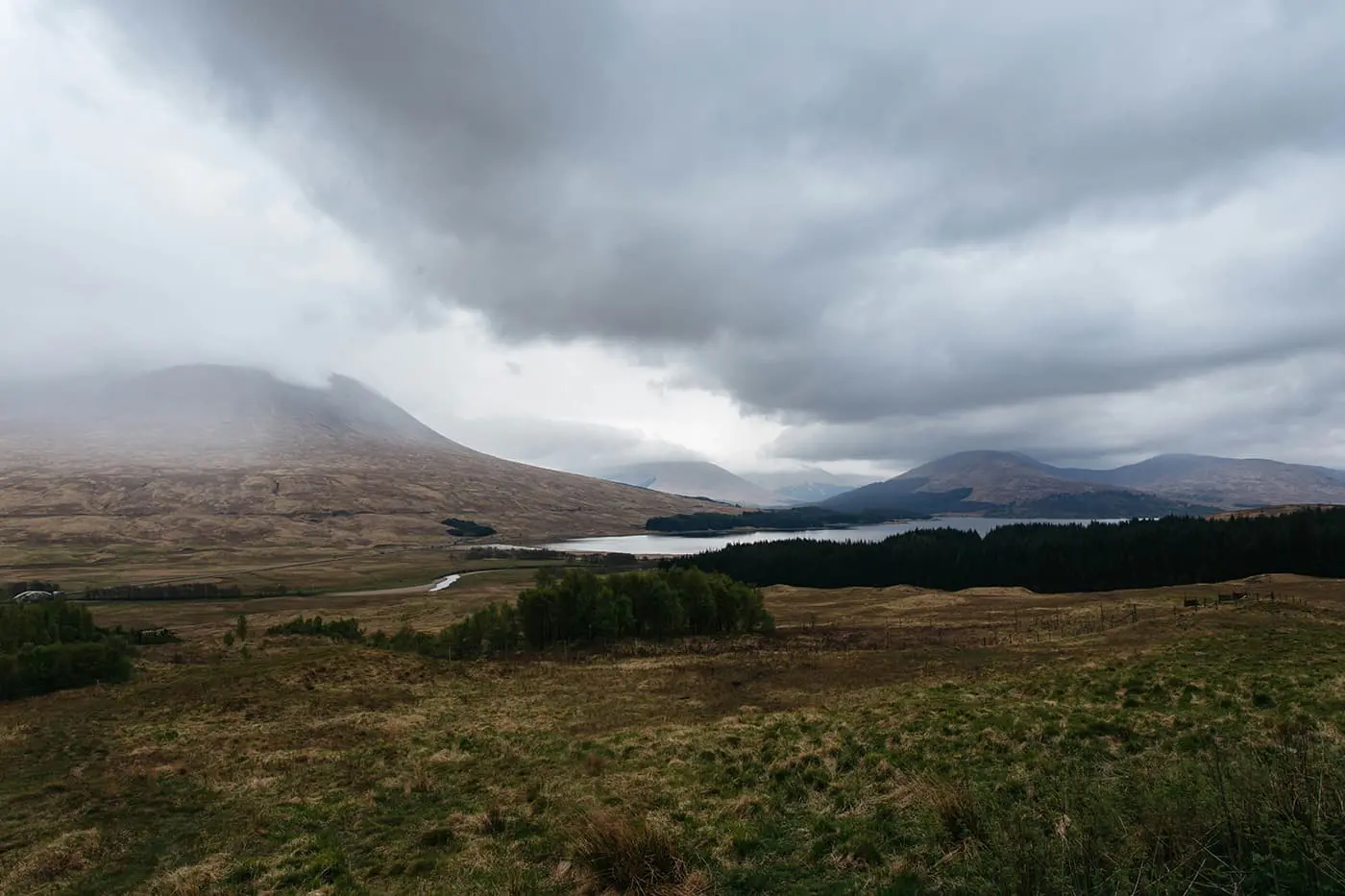
How to get around?
It doesn’t matter which direction you choose; Fort William and Inverness are both easily accessible by bus and train from all major cities. Inverness has an airport, but most flights are cheaper from Edinburgh or Glasgow. If you start or finish in Fort William and take a flight from Glasgow, the train journey is highly recommended and is already worth the trip on its own.
There are bus links along the whole way at each stage; the only stage without a bus stop is Gairlochy.
Stages
Fort William – Gairlochy 17 km | 10.5 mi
Gairlochy – Laggan 19 km | 12 mi
Laggan – Fort Augustus 17 km |10.5 mi
Low Route: Fort Augustus – Invermoriston 12 km | 7.5 mi
High Route: Fort Augustos – Invermoriston 12 km | 7.5 mi
Low Route: Invermoriston – Drumnadrochit 23,5 km | 14.5 mi
High Route: Invermoriston – Drumnadrochit 22 km | 14 mi
Drumnadrochit – Inverness 30,5 km | 19 mi
Photo gallery
Accommodations
Fort William, as your starting point, offers all you need, including some outdoor shops for fuel or last-minute gear. A little further, near Glen Nevis, there is a campsite.
Gairlochy has only two B&Bs, so book in advance. There is also a campsite at Torness, 2km from Gairlochy.
Laggan only offers a hostel, but keep a closer look around; not far away, you will find some more facilities.
Fort Augustus is a small town but offers all you could wish for, including shops and a campsite. The same goes for Invermoriston, but there is no campsite.
Drumnadrochit has a big choice of hotels, B&Bs, a hostel, and a campsite.
Inverness is a big city and offers all you need, as well as outdoor shops and an airport.
Best time of the year
Similar to many other countries, the optimal time for hiking is during the summer months (April-September). However, Scotland offers a unique proposition with its landscape dominated by hills, lots of hills! The highest mountain, Ben Nevis, stands at 1345m (4413ft). So yes, Scotland is hikable all year long, and each season brings its advantages and challenges.
Summer Months: During the summer, you are blessed with long days, providing ample time to cover your distance without feeling rushed. It’s an opportunity to enjoy lochs for a swim and have leisurely lunches with scenic views. Especially in certain highland areas, hiking during the dark should be avoided due to boggy terrains that require special attention. The summer months generally offer the driest days, with temperatures reaching about 18-20°C (65-68°F). However, Scotland’s abundance of water, including rivers, lakes, and marshes, brings its biggest challenge: MIDGES! Tiny little mosquitoes that can be quite bothersome and sting.
Winter Months: On the upside, winter months are free of midges, but there’s a trade-off. Expect a lot of rain, and snow is possible from the end of October until March. The days become significantly shorter, nights colder, and storms more frequent, making camping more challenging. But in the winter months, you have the opportunity to see the country with fresh eyes as trees and fields undergo a transformation, changing their colors from green to warm orange all over.
In conclusion, a very German piece of advice from my side: “There’s no such thing as bad weather, only the wrong gear!” Scotland will be your grandest adventure with the right equipment.
Safety & Gear
Ensure you’ve chosen the right season for you.
For Summer Months:
- Don’t forget a mosquito net for your face, thin long sleeves, trousers (no worries, Scottish summers rarely exceed 20°C), or insect repellent.
- Opt for a tent that is mosquito-safe.
- Since it rains about 182 days in Scotland (lucky you, this part of Scotland counts as one of the driest), a rain jacket is essential, even in summer. You will never be safe from getting wet.
For Winter Months:
- Always pack a hardshell raincoat and rain trousers – you will get wet!
- Depending on your chosen trail, include an ice axe and crampons.
- A tent is often inevitable, especially in remote areas where bothies or village accommodations may not be accessible. During winter, storms can be intense, so ensure your tent has sufficient safety lines. If not, your tent may break or fly away. A dangerous situation in which none of us wants to find ourselves.
General Gear:
- A water filter is a must-have due to Scotland’s abundance of water sources and rich wildlife. Filter or boil water for at least 3 minutes. This way some areas even allow you to carry none at all.
- A paper map is recommended for a good overview of the area, helping you find quick escape routes or alternative paths. And as a good practice for upcoming trails where you simply need it.
- Scotland is home to diverse wildlife, including deer, birds, and seals. Not a danger for you but maintain a respectful distance to avoid disturbance.
- Always check the weather before heading back on the trail.
- Due to remote areas with unreliable reception, especially for solo hikers, a satellite tracker is highly recommended and can be a lifesaver.
- A guidebook provides insights into upcoming terrain and helps you find suitable spots for your tent, considering the boggy areas where camping may be restricted.
With this comprehensive gear, you can hike with confidence, whether navigating through summer rains or winter storms. Stay safe and enjoy the adventure!
Good to know
Wild Camping
Wild camping is officially allowed in Scotland! Let me tell you about the “Scottish Outdoor Access Code” (link below).
Lightweight camping is permitted in small numbers and only for 2 or 3 nights at the same place. Do not camp on private property, in enclosed fields of crops, or near farm animals, and stay well away from buildings, roads, and historical structures. Do not disturb deer stalking or grouse shooting. If you’re close to a house, ask the landowner for permission (Scottish people are super friendly). And, as always, leave no trace.
There are some special rules for specific National Parks; please check them out on their website. Additionally, they have a useful page about campsites all over the country and a lot of other helpful information!
Scottish Bothies
Hiking in Scotland offers a special treat: their bothies! While we’re all familiar with mountain shelters, often used in emergencies or bad weather, they may not always entice us to spend a night unless absolutely necessary. However, the Scottish bothy takes the experience to a whole new level. Some even come equipped with a flushing toilet or electricity.
These huts are lovingly cared for, not just by the Mountain Bothy Association (www.Mountainbothies.org.uk — yes, you can become a member and support them), but also by locals who enjoy spending a night in the wilderness.
The best part? You don’t pay, but it operates on a system of trust and respect:
- Always leave the bothy better than you found it!
- Everyone is welcome! It’s not “your” bothy.
- No vandalism.
- Take all your rubbish.
- You can leave useful things for the next person but never leave rotting food.
- Bury human waste far away from the bothy and water sources.
- Ensure the doors and windows are properly closed when you leave.
Keep in mind, the act of offering us a free and often charity-run shelter is a kind one! Please treat it with the utmost respect!
Useful links
Guidebooks
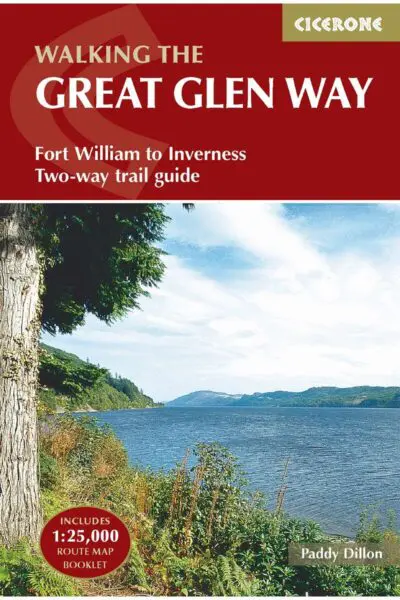
Great Glen Way
View guidebookTerms of Use: important to all visitors on this website. We strive to publish high quality content and information on this website. However it’s always possible that we’re missing out on some crucial information. In spite of the fact that this route, associated GPS track (GPX and maps) were prepared under diligent research by the specified contributor and/or contributors, the accuracy of such and judgement of the author is not guaranteed. Therefore, hiking-trails.com and contributors are in no way liable for personal injury, damage to personal property, or any other such situation that might happen to individuals hiking or following this route. Should you choose to hike this trail, this is always at your own risk. Check out our guidelines for safety hiking and Leave No Trace principles at the hiking 101 page.
Download GPX



